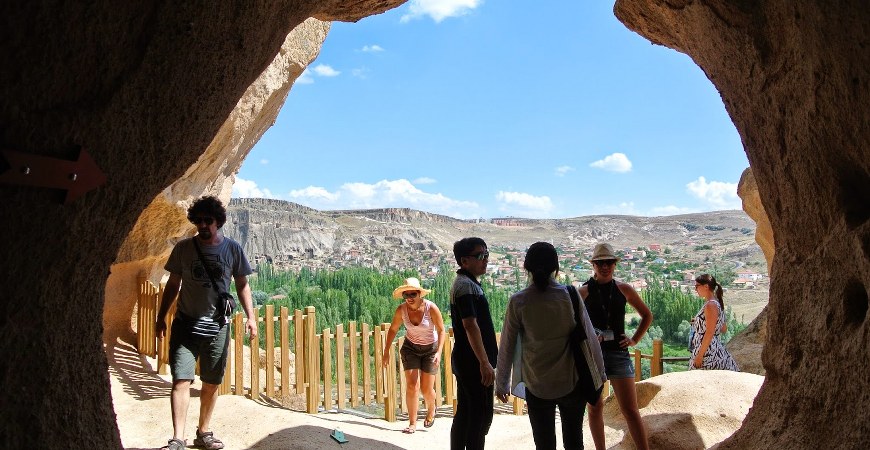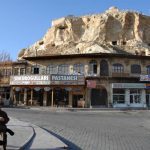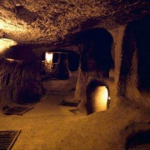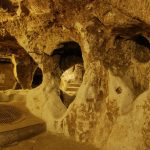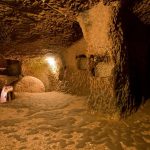Kaymakli Underground City – Soganli Valley and Nevsehir (Cappadocia),
Kaymakli and Kaymakli Underground City
It is 19 km. from Nevsehir on the road to Nigde. Kaymakli is famous for its underground city. During the days when Christianity was in crisis, and torture and oppression was dominant, the believers searched for places where they could live and worship freely. Some of them came to settle in the town of Kaymakli but it was not possible for these people to defend themselves in the open-air. So they followed a huge underground city out of the rock.
Soganli Valley and Mavrucan
Mavrucan is about 30 km. to the south of Urgup. In Mavrucan the history of settlement can be divided into two. The first is the Early Monastic Age during which the churches were hollowed from the faces of the slopes like tombs. Two of these have lion masks at their entrances, one still untouched. In the other type of churches columns decorated with Roman-style are in ruins, the paintings being of the 7th century. The Soganli valley was continuously inhabited until the 13th century. The paintings vary between 9th and 13th centuries. The beauty and variety of the frescoes of the St. Barbara (1006 or 1021) and Karabas (1060) Churches are really interesting. The outside view of the Domed Church is also striking. It is easy to visit Soganli. The man in charge is always available in the village to take the visitors around.
Nevsehir
Nevsehir was a village with 13 houses in the beginning of the 18th century. It developed with the contributions of Damat Ibrahim Pasha, and later on became a lovely town of Central Anatolia. During the Seljukian rule, the village was connected with Urgup. Later on, it became a subdivision of the province of Nigde. Finally, in 1954, the province of Nevsehir was established. Today Nevsehir is a touristic town worth seeing with its mosques, medreses, museum, and castle.
Museum Of Damat Ibrahim Pasha In Nevsehir
The museum as established in a school building which was constructed with the orders of Damat Ibrahim Pasha. Three of the rooms are used as the exhibition halls, and the other part is used for administrative purposes.
1st Section: Architectural work of the 18th century are exhibited with photographies together with the men’s and women’s dresses of the same period. In addition to these photographies of the miniatures reflecting the life in the Ottoman palace, hand-written books, tools of calligraphy and some coins are also exhibited.
2nd Section: This is where the archeological remains are displayed. Axes and earthen pots of the Prehistoric Ages and various pottery of the Hittite, Phrygian, and Byzantine Ages are exhibited. 3rd Section: Ethnographic antiquities are exhibited here. There are porcelain containers, petroleum lamps, various dresses, bows and arrows, kitchenware, and jewelry. In the museum yard Roman and Byzantine jars, tombstones, millstones, inscriptions and animal sculptures are exhibited.

